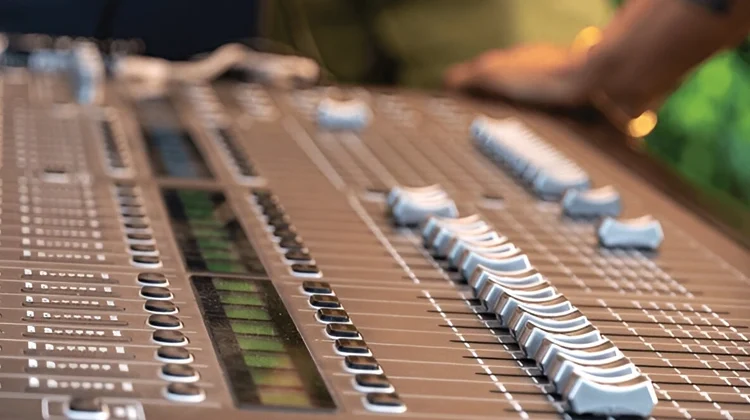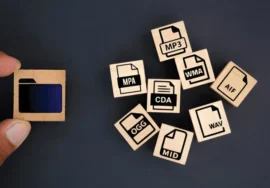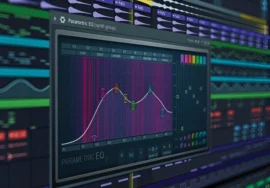
A Comprehensive Guide
Whether you’re a music enthusiast, creating a personalized playlist, or a content creator stitching together sound effects for a video, merging audio files is a common task. This guide will give you a clear and comprehensive understanding of how to merge songs in popular formats like MP3, M4A, and WAV. We’ll explore various methods, from online tools to dedicated software, ensuring you find the best solution for your needs.
Understanding Audio Formats
Before diving into the merging process, it’s essential to grasp the basics of audio formats.
- MP3: The most widely used format, offering a good balance of sound quality and file size compression.
- M4A: A lossless format often associated with Apple devices, preserving audio quality without significant compression.
- WAV: A lossless format known for its high audio quality but larger file sizes.
Methods to Merge Songs
- Online Audio Joiners
- Pros: Convenient, often free, and requires no software installation.
- Cons: Maybe they have failed size limitations and might not offer advanced features.
- Audio Joiner:https://audio-joiner.com/
- Clideo:https://clideo.com/
- Kapwing:https://www.kapwing.com/
- Dedicated Audio Editing Software
- Pros: Offer a wider range of features, including editing, effects, and customization.
- Cons: Can be more complex to learn, especially for beginners.
- Audacity: A free, open-source tool with a user-friendly meeting.
- Adobe Audition: A professional-grade software with powerful features.
- Garage-band: A popular choice for Apple users, offering a streamlined experience.
- Media Players with Merging Capabilities
- Pros: Convenient if you already use a specific media player.
- Cons: Features may be limited compared to dedicated audio editing software.
- iTunes (macOS): Can join tracks within playlists.
- Windows Media Player: Offers basic merging functionality.
Step-by-Step Guide: Using Audacity
- Download and Install: Get Audacity from the official website (https://sourceforge.net/projects/audacity/).
- Import Files: Drag and drop your desired songs onto the Audacity timeline.
- Arrange Tracks: Adjust the order of tracks as needed.
- Merge Tracks: Select the tracks you want to merge, right-click, and choose “Mix Selected Tracks.”
- Export: Go to “File” > “Export Audio” and choose your desired format and location.
Added Tips
- Check for compatibility: make sure your chosen method supports the audio formats you’re using.
- Consider Audio Quality: If preserving high audio quality is crucial, opt for lossless formats and tools that support them.
- Experiment with Features: Explore the features offered by your chosen tool, such as cross-fading, trimming, and adding effects.
- Backup Your Files: Always create backups of your original audio files before making any changes.
Advanced Techniques for Audio Merging
While the methods discussed earlier give a solid foundation for merging songs, there are advanced techniques that can enhance your audio creations. Let’s explore these techniques:
1. cross-fading
Cross-fading involves fading out one track while fading in another, creating a smoother transition between songs. This technique is used in playlists and music mixes.
2. Volume change
To ensure a balanced sound when merging multiple tracks, you may need to adjust the volume of individual songs. This can be done using audio editing software or online tools.
3. Adding Effects
Enhance your merged audio with various effects like reverb, echo, equalization, and compression. These effects can add depth, dimension, and a unique character to your creations.
4. Time Stretching and Pitch Shifting
If you want to alter the tempo or pitch of a track before merging it, consider using time-stretching and pitch-shifting tools. This can be useful for creating interesting musical effects or syncing audio to visuals.
5. Batch Processing
If you frequently merge multiple files, batch processing can save you time. Some software allows you to automate the merging process for numerous files simultaneously.
6. Working with Multiple Tracks
For more complex projects, you may need to work on multiple tracks simultaneously. Audio editing software provides features like layering, grouping, and soloing tracks, allowing you to manage and manipulate individual elements within your merged audio.
7. Exporting to Different Formats
Once you’ve merged your songs, you can export them in various formats to suit your specific needs. Common formats include MP3, M4A, WAV, FLAC, and AAC.
8. Collaboration and Sharing
If you’re working with others on a project, consider using cloud-based collaboration tools or sharing your merged audio files through online platforms. This can facilitate teamwork and streamline the creative process.
9. Troubleshooting Common Issues
When merging audio files, you may encounter certain challenges. Some common issues include:
- Synchronization problems: Ensure that the tracks are aligned correctly in terms of timing.
- Audio quality degradation: Use high-quality audio sources and avoid excessive compression to maintain sound quality.
- Compatibility issues: Ensure that your chosen tools and formats are compatible with your devices and software.
10. Experimentation and Creativity
Don’t be afraid to experiment with different techniques and settings to achieve your desired sound. Audio merging is a creative process, so let your imagination guide you.
By incorporating these advanced techniques into your audio merging workflow, you can create more polished, professional, and engaging audio experiences. Remember, the key to success is practice, experimentation, and a willingness to learn new skills.
Conclusion
Merging songs is a straightforward process that can be accomplished using various methods. Whether you prefer online tools, dedicated software, or features within your media player, the key is to select the approach that best suits your needs and skill level. By following the steps outlined in this guide, you’ll be able to seamlessly combine your favorite tracks and create personalized audio experiences.





